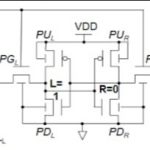This is part 2 (of 2) of my coverage of the recent FD-SOI Symposium in San Jose (April 2016), this time looking at the 22nm presentations by GlobalFoundries, ARM (finally!!), VLSI Research Inc and Sigma Designs. (Part 1 looked at the 28nm presentations.) Most are now available on the SOI Consortium website – click here to see the full… Read More
Highlights of the 28nm FD-SOI San Jose Presentations
Most of the presentations from the FD-SOI Symposium in San Jose last month (April 2016) are now available on the SOI Consortium website (click here to see the full list — if they’re posted, you can download them freely from there). If you don’t have time to wade through them all, here are some of the highlights. … Read More
IMEC Technology Forum (ITF) – Moving the Electronics Industry Forward
IMEC is a technology research center located in Belgium that is one of the premier semiconductor research centers in the world today. The IMEC Technology Forum (ITF) is a two-day event attended by approximately 1,000 people to showcase the work done by IMEC and their partners.
Gary Patton is the Chief Technical Officer and Senior… Read More
Quick Guide to FD-SOI at #53DAC
If you’re headed to #53DAC (June 5-9 in Austin,TX) and are interested in learning more about FD-SOI, there will be lots of opportunities. Here’s a quick guide to get you started. … Read More
SRAM Optimization for 14nm and 28nm FDSOI
I’ve done SRAM and DRAM design before as a circuit designer from 1978-1986, but in 2016 there are so many more challenges to using 28nm and 14nm on FDSOI technology. One way to keep abreast of SRAM design is to read conference papers, so I just finished a paper from authors at STMicroelectronics and MunEDA presented at the IEEE… Read More
Why NXP is Moving to FD-SOI (Part II)
At NXP, we’re very excited about the prospects for our new i.MX 7 and 8 series of applications processors, which we’re manufacturing on 28nm FD-SOI. As noted in part I of this article series, the new i.MX 7 series, which leverages the 32-bit ARM v7-A core, is targeting the general embedded, e-reader, medical, wearable… Read More
Why is NXP Moving to FD-SOI?
The latest generations of power efficient and full-featured applications processors in NXP’s very successful and broadly deployed i.MX platform are being manufactured on 28nm FD-SOI. The new i.MX 7 series leverages the 32-bit ARM v7-A core, targeting the general embedded, e-reader, medical, wearable and IoT markets, where… Read More
Body-biasing for ARM big or LITTLE in GF 22FDX
GLOBALFOUNDRIES has been evangelizing their 22FDX FD-SOI process for a few months; readers may have seen Tom Simon’s write-up of their preview at ARM TechCon. Dr. Joerg Winkler recently gave an updated webinar presentation of their approach in an implementation of ARM Cortex-A17 core.
By now, you’ve probably heard that 22FDX… Read More
No reason for FD-SOI Roadmap to follow Moore’s law!
We in Semiwiki are writing about FD-SOI since 2012, describing all the benefits offered by the technology in term of power consumption, price per performance compared with FinFET, etc. Let me assess again that I am fully convinced that FD-SOI is a very smart and efficient way to escape from the Moore’s law paradox: the transistor… Read More
Samsung 10nm and 7nm Strategy Explained!
Samsung Foundry had an intimate gathering recently for 200 customers and partners that I missed, but I know several people who attended. This event was a precursor to #53DAC where Samsung has the largest foundry presence. I was able to clarify what I had heard via a phone call with Kelvin Low so here is my version of what is important:… Read More


